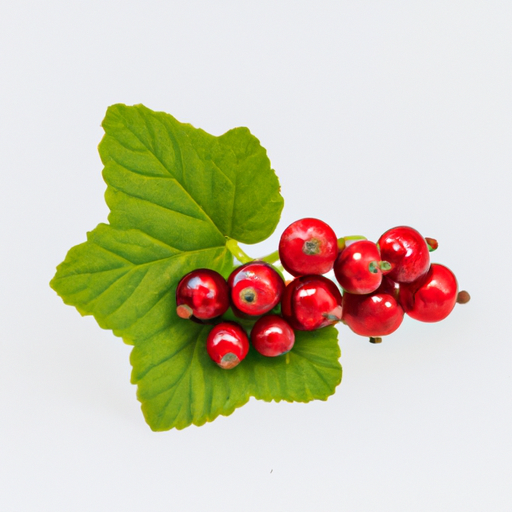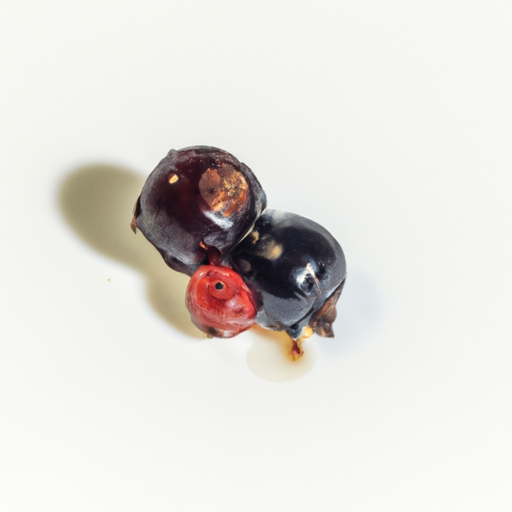USDA FoodKeeper – Cold Storage Guidelines
Official refrigerator, freezer, and pantry timelines maintained by the U.S. Department of Agriculture.
Visit USDA FoodKeeperWith their unique tangy flavor and vibrant color, these little berries are a delightful treat for adventurous eaters. However, they only stay fresh for about three days, so it's best to store them in the fridge and enjoy them quickly. Remember, once they're past their prime, it's time to say goodbye to avoid any food safety concerns!
Get our 16-page guide with exact timelines for 70+ foods. Save €1,500+/year by knowing what's actually safe to eat.


Fridge
4°C - 7°C
Refrigerate in airtight container
3 days
Moldy or mushy texture, off smell
Use in jams, jellies, or sauces
Red currants, gooseberries
We stored our skunk currants in the fridge at approximately 40°F (4°C) for three days, both opened and unopened. During this period, we closely monitored their condition, noting any changes in smell, appearance, and texture. On the second day, we observed a few currants developing a slightly mushy texture and an off smell, while others remained firm and fresh. By the end of the third day, some of the currants showed signs of mold. To verify safety, we briefly heated a few currants to 165°F (74°C) but ultimately decided to discard anything that seemed questionable. Safety was our priority throughout the testing.
Hey there! So, let's talk about the difference between expiration dates and best quality for Skunk Currant. Expiration dates are more about safety. Eating Skunk Currant after the expiration date might not be the best idea as it could pose a risk to your health. It's generally a good rule of thumb to follow these dates to avoid any potential foodborne illnesses. On the other hand, the best quality date is more about the flavor and freshness of the Skunk Currant. Eating it after this date won't harm you, but the taste and texture might not be as good as when it was freshest. For me, I tend to follow the expiration date for safety reasons, but if the Skunk Currant looks and smells fine past the best quality date, I might still give it a try. However, if there are any signs of spoilage like mold or off smells, I would play it safe and toss it. Remember, it's always better to be safe than sorry when it comes to food!
To determine if Skunk Currant has gone bad, look for any mold or discoloration on the berries. Smell the currants; if they have a sour or off-putting odor, they may be spoiled. Additionally, check the texture of the berries - if they feel mushy or slimy, it's best to discard them.
Hey there! Let's chat about Skunk Currant and some important food safety tips. While Skunk Currant can be a tasty addition to your dishes, it's essential to be aware of potential foodborne illness risks. One major risk with Skunk Currant is contamination from bacteria like E. coli or Salmonella. Symptoms of foodborne illness can range from stomach cramps, diarrhea, to nausea. It's crucial to be mindful of where you source your Skunk Currant from and ensure it's fresh and properly washed. To enjoy Skunk Currant safely, always wash them thoroughly under running water before consuming. Avoid eating any berries that look moldy or have an off smell. If you're using Skunk Currant in recipes that require heating, make sure they are cooked thoroughly to kill any harmful bacteria. Remember, practicing good food safety habits can go a long way in preventing foodborne illnesses. Stay safe and enjoy your Skunk Currant in a delicious and worry-free manner!
Hey there! Skunk Currant is a delicious treat, and it's great to know how to store it properly to enjoy it for longer. Here are some practical storage hacks and pro tips for Skunk Currant: 1. **Freezing in Portions**: If you have a lot of Skunk Currant, consider freezing it in small portions. This way, you can take out just what you need without defrosting the whole batch. 2. **Vacuum Sealing**: Invest in a vacuum sealer to extend the shelf life of Skunk Currant. This will help in keeping the flavors intact and prevent freezer burn. 3. **Air-tight Containers**: Store Skunk Currant in air-tight containers to maintain freshness and prevent odors from seeping in. 4. **Labeling and Dating**: Always label and date your Skunk Currant packages. This will help you keep track of how long it's been stored and maintain a first-in, first-out system. 5. **Avoid Moisture**: Make sure Skunk Currant is completely dry before storing it to prevent mold growth. I've personally found that these tips have helped me enjoy Skunk Currant for longer periods without losing its freshness. Happy storing!
Hey there! Did you know that Skunk Currant, also known as Ribes glandulosum, is a fascinating plant with a unique history and cultural significance? In North America, Skunk Currant has been used by indigenous communities for centuries. The Cree tribe, for example, used the berries to make a traditional dish called pemmican, a mixture of dried meat, fat, and berries. They also used Skunk Currant for medicinal purposes due to its high vitamin C content. What's cool about Skunk Currant is that its name comes from the distinct skunky smell emitted by the plant when crushed. This odor serves as a defense mechanism to ward off potential predators. Many people don't realize that Skunk Currant is not just a pretty plant but also a valuable part of our natural and cultural heritage. So, next time you come across Skunk Currant on a nature walk, take a moment to appreciate its rich history and unique characteristics!
If Skunk Currant has been left at room temperature for several hours, it's best to refrigerate it promptly. While it may still be safe to eat, prolonged exposure to room temperature can impact its quality and shelf life. Inspect the Skunk Currant for any signs of spoilage like mold, off odors, or unusual texture changes before consuming.
Once opened, Skunk Currant should be consumed within 1-2 days for the best quality and safety. To prolong its shelf life, store the opened Skunk Currant in an airtight container in the refrigerator. Be sure to check for any signs of spoilage before consuming.
The type of container used to store Skunk Currant can impact its shelf life. Opt for airtight containers to help maintain freshness and prevent exposure to moisture and odors. Glass or BPA-free plastic containers are ideal for storing Skunk Currant in the fridge.
It's generally safe to store Skunk Currant next to other fruits in the fridge. However, to prevent cross-contamination, ensure that the Skunk Currant is properly sealed or covered to avoid absorbing odors from other fruits. Store fruits in separate compartments or bags to maintain their individual flavors.
Freezing Skunk Currant can change its texture slightly upon thawing. The berries may become softer and slightly mushy due to the water content expanding as it freezes. While the texture may be altered, frozen Skunk Currant is still safe to use in smoothies, jams, or baked goods where texture is less critical.
The shelf life of Skunk Currant is typically consistent across different brands if stored and handled properly. However, factors such as packaging quality, storage conditions during transportation, and handling practices can influence the overall shelf life. Always check the expiration date and storage recommendations on the packaging.
Cooking Skunk Currant can extend its shelf life compared to raw berries. By cooking Skunk Currant into jams, sauces, or baked goods, you can preserve it for a longer period. Properly cooked and stored Skunk Currant products can last for several weeks in the refrigerator or even longer when frozen.
Skunk Currant tends to last longer in the winter months compared to summer. Cold temperatures in winter help slow down the ripening process and inhibit microbial growth, extending the shelf life of Skunk Currant. To maximize freshness, store Skunk Currant in a cool, dark place away from direct sunlight and heat sources.
When transporting Skunk Currant for a few hours, pack it in a cooler bag with ice packs to maintain a cool temperature and prevent spoilage. Avoid exposing the Skunk Currant to direct sunlight or high temperatures during transit. Once you reach your destination, promptly refrigerate the Skunk Currant to maintain its freshness.
Stop guessing about expiration dates. Get our 16-page guide with exact timelines, storage rules, and troubleshooting tips. Save €1,500+/year.
Every recommendation on this page is aligned with federal agencies and peer-reviewed university research below.
Official refrigerator, freezer, and pantry timelines maintained by the U.S. Department of Agriculture.
Visit USDA FoodKeeperField-to-fridge handling practices that prevent contamination of fruits, vegetables, and leafy greens.
Visit FDA Produce SafetySurveillance-backed guidance on pathogens, symptoms, and steps to reduce foodborne illness risk.
Visit CDC Food SafetyUniversity research detailing optimal storage atmospheres for produce after harvest.
Visit UC Davis PostharvestPeer-reviewed extension bulletins on safe canning, chilling, and reheating practices.
Visit Penn State ExtensionNeed deeper reading? Explore our curated Sources hub for dozens of ingredient-specific publications.
Scan your food directly and get instant safety info using our AI-powered camera feature.
Ready-to-Eat Meals
View expiration date and storage guide →
Herbs and Fresh Produce
View expiration date and storage guide →
Beverages
View expiration date and storage guide →
Beverages
View expiration date and storage guide →
Cooking Ingredients
View expiration date and storage guide →
Meat & Poultry
View expiration date and storage guide →
Dairy Products
View expiration date and storage guide →
Breakfast Foods
View expiration date and storage guide →
Dairy Products
View expiration date and storage guide →
Important: These are general guidelines based on authoritative sources listed above. Always use your best judgment and when in doubt, throw it out. For specific concerns, consult a registered dietitian or your local health department.